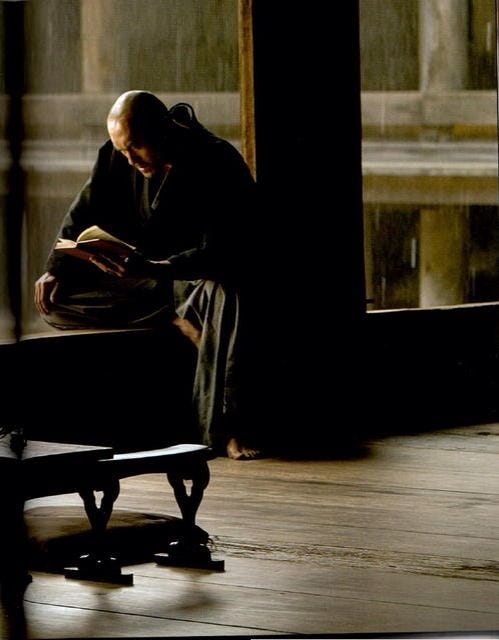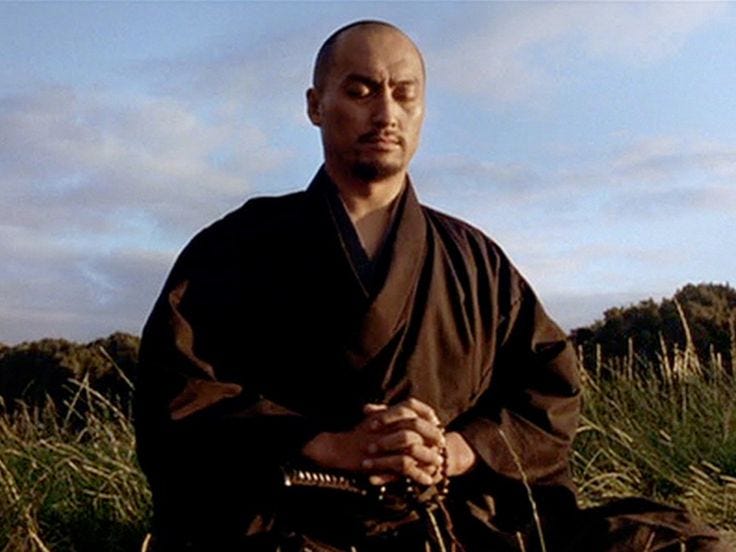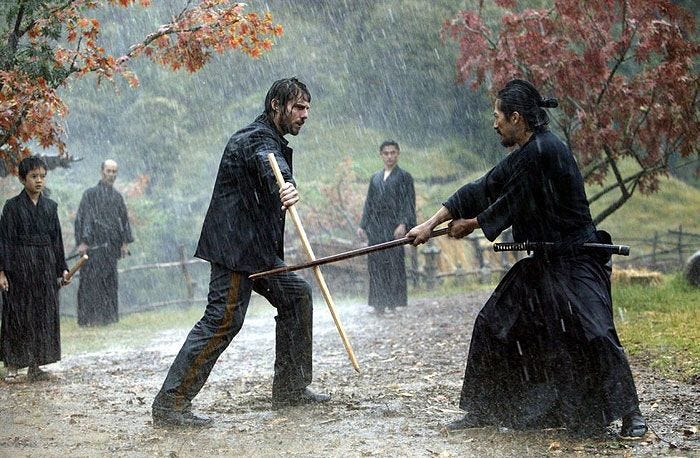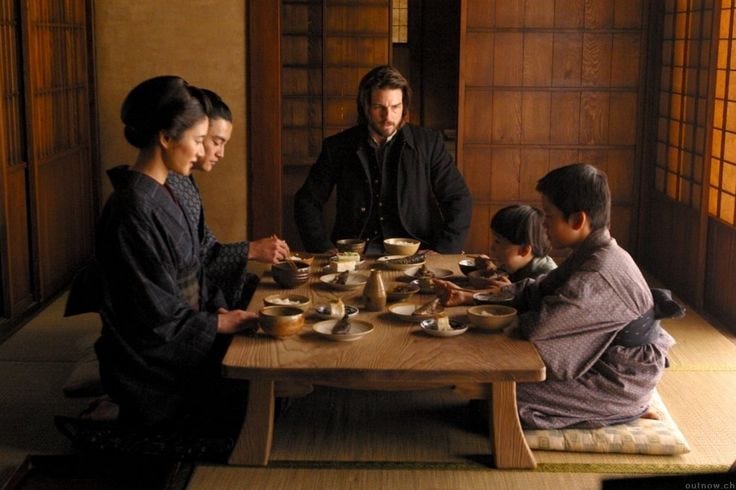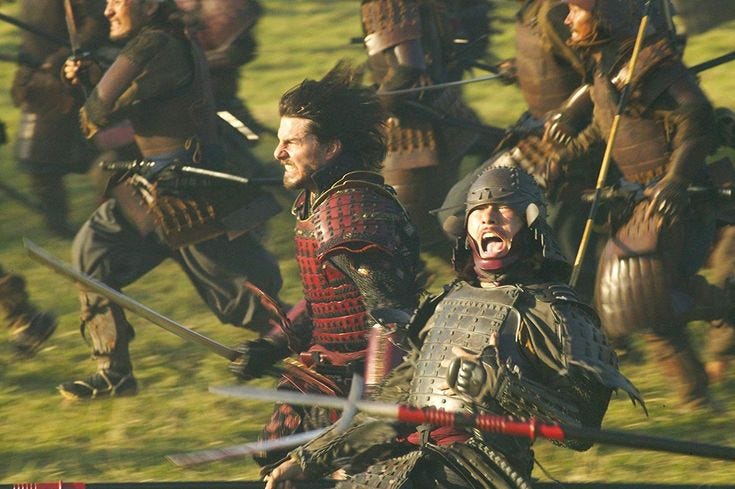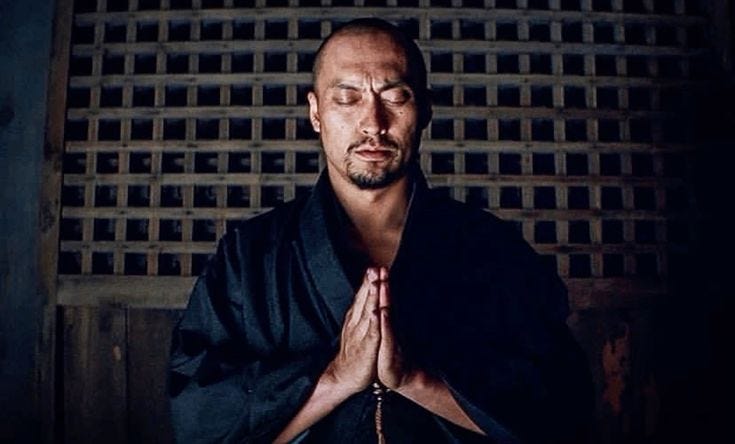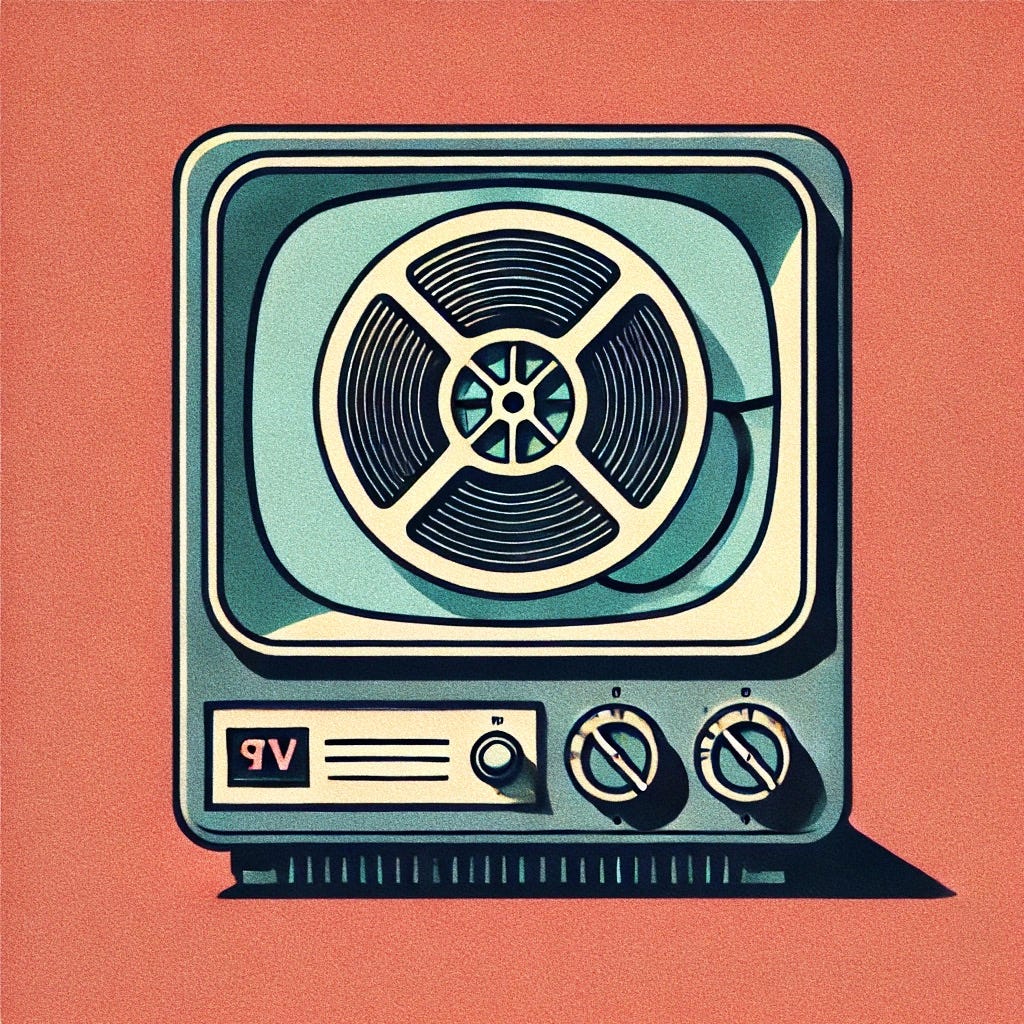A Meditation On Honor, Service, and What It Means to Live With Dignity
Hey everyone, how’s it going? E. A. Bland here, and welcome back to The Year I Became. Today, I’m revisiting one of the films that shaped my perspective more than almost any other: The Last Samurai (2003), directed by Edward Zwick and starring Tom Cruise and Ken Watanabe.
I’ve loved this movie for over 20 years—not because it’s flawless, but because of what it stirs inside me. It’s a historical epic, yes. But it’s also a quiet, powerful story about cultural humility, personal rebirth, and the struggle between tradition and change.
Let’s take a look—not just as viewers, but as fellow travelers asking the same question at the heart of this film:
“What do I want for myself?”
Foundations – The Broken and the Rooted
This story begins with a mirror: Katsumoto (Watanabe), alone in meditation on a hilltop. Algren (Cruise), alone in a backstage tent, hungover and haunted. Two men from two worlds, both shaped by war—but one is grounded in purpose, the other unraveling in shame.
Set between 1876–1877, the plot is clear and grounded: Captain Nathan Algren, a disillusioned American soldier, is hired to help modernize Japan’s army. But instead of training soldiers, he finds himself a prisoner of those labeled “rebels”—men who live by an ancient code of honor.
The world is fully immersive. We see a Japan caught in transition—modernizing rapidly but unsure what it’s leaving behind. We also feel Algren’s inner war, asking:
Is this all I’m good for?
Just violence and war?
And then comes the question that haunts the film—and maybe some of us, too: What do you want for yourself?
FILMS Score: 9.5/10
Imagery – Stillness and Struggle in Every Frame
This film is visually rich in a way that feels spiritual. You could pause any scene and frame it.
Warm, golden hues embrace the samurai village. Cold blues and greys dominate the imperial army. The visual contrast tells the emotional story long before a word is spoken.
There are comic-book-perfect sequences, like the rain-soaked wooden sword fight between Algren and Ujio—each frame choreographed with reverence. And then there’s the battlefield, where silence and the distant beat of war drums do more than any speech ever could.
Even Tom Cruise’s physical performance—his tremors, his twitchiness—sells the weight of trauma without saying a word. This is imagery that feels lived in.
FILMS Score: 9.8/10
Layered Storytelling – Redemption, Ritual, and Reflection
This is where The Last Samurai becomes more than a period drama. It becomes deeply human.
Algren’s arc from broken mercenary to reflective warrior isn’t about becoming a samurai. It’s about remembering how to feel. About seeing dignity in people he was trained to see as “the enemy.”
He’s cared for by the widow of the man he killed. He bonds with her children. He begins to study—not just their language, but their way of life. And in doing so, he realizes how far he’s fallen from who he wanted to be.
Katsumoto’s arc is equally powerful. He knows the way of the samurai is fading, but he holds the line anyway—not out of stubbornness, but reverence. Not every battle is about victory. Some are about dying well so others might live well.
There’s poetry in the cherry blossoms. There’s heartbreak in the unspoken connection between Nathan and Taka. And there’s hope in Katsumoto’s final breath: “They are all perfect.”
Maybe he meant the blossoms. Maybe he meant the soldiers. Maybe… all of us.
FILMS Score: 10/10
Motion – A Warrior’s Pace
The rhythm of this film is meditative, then explosive, then gentle again. It mirrors Algren’s transformation.
The action scenes hit hard—but they don’t rush. There’s patience in the editing, space for the emotional weight to settle. Even the training montages feel less like power-ups and more like spiritual practice.
You can feel the movement evolve: from chaos to discipline, from noise to stillness. From shaking hands to a calm blade.
The score by Hans Zimmer deserves its own mention—especially in the final battle. Drums build. Silence stretches. Then, cannon fire splits the moment wide open.
This is more than pacing. It’s presence.
FILMS Score: 9.0/10
Subtexts – The Way Beneath the Words
Here’s where The Last Samurai reaches beyond the screen.
This film is a quiet protest against commodified violence and forgotten rituals. It asks:
Is modernization progress if we lose our soul in the process?
It explores service—not as subjugation, but as devotion. The word “samurai” means “to serve.” And in a world obsessed with power, that’s a radical idea. What would it look like to serve something bigger than yourself? A code. A family. A country. A moment of honor.
It made me think about the small kindnesses we extend to people we don’t understand. About listening, even in disagreement. About leaving space for someone to grow.
This film changed the way I speak to others—even enemies. It made me more generous, more curious. It made me want to live a life of purpose and peace.
And that’s why I return to it—year after year.
FILMS Score: 10/10
Final Score: 48.3 / 50
FILMS Rating: 9.66/10
Streaming: Available to rent or buy.
In Closing
The Last Samurai isn’t just a war epic. It’s a question in film form:
What does it mean to live with honor?
It challenged me as a teenager and still humbles me today. In my work. In my friendships. In how I speak to strangers. It reminds me that the smallest kindness—an introduction, a bow, a listening ear—can carry the weight of a thousand battles.
If you’ve never seen this film, watch it. And if you’ve seen it before, revisit it with new eyes. Not just to admire the visuals or the action—but to reflect on your own code.
Am I living the way I want to live?
What do I want for myself?
This has been Films For Your Consideration.
Until next time,
See you soon!




